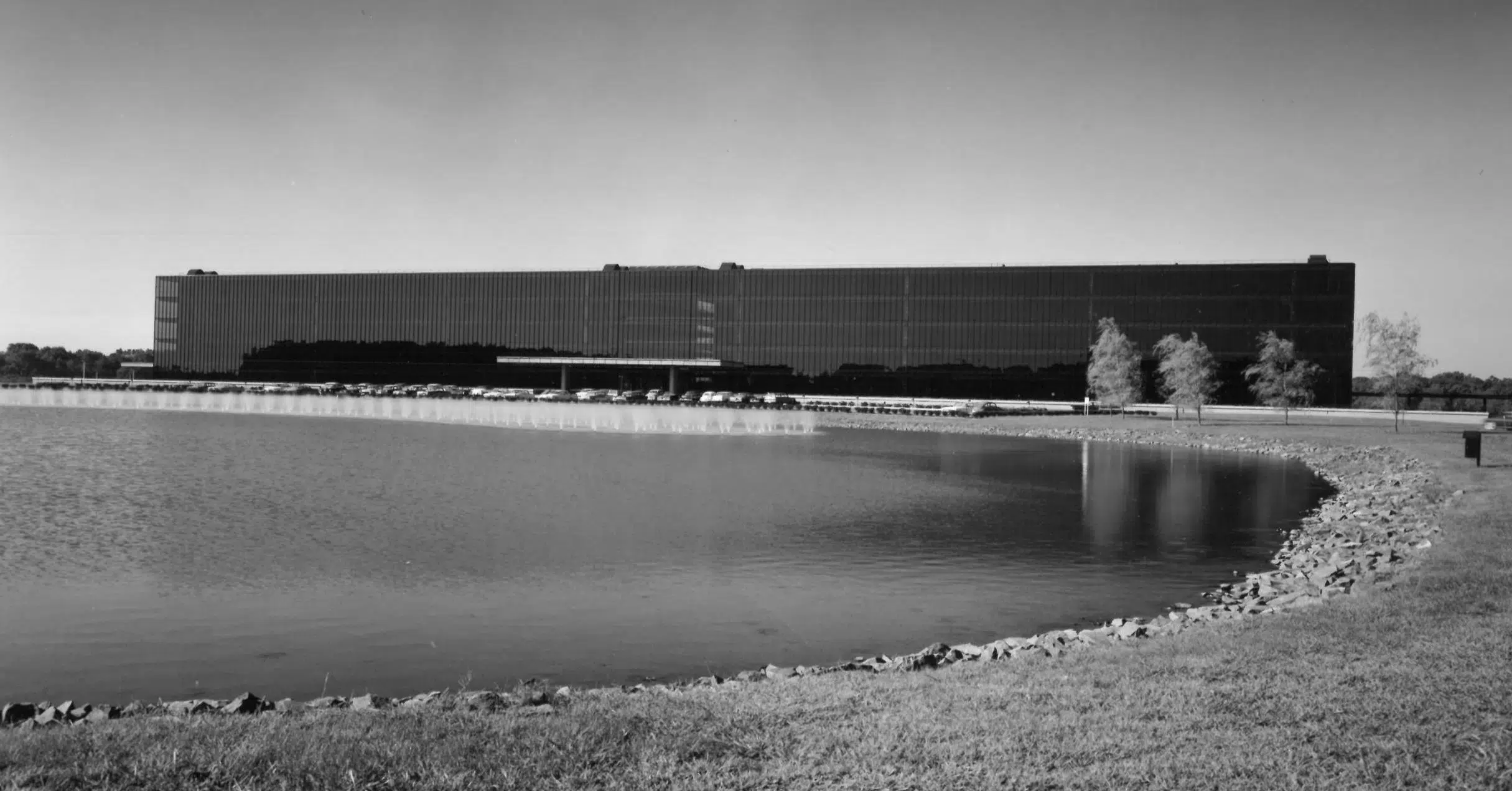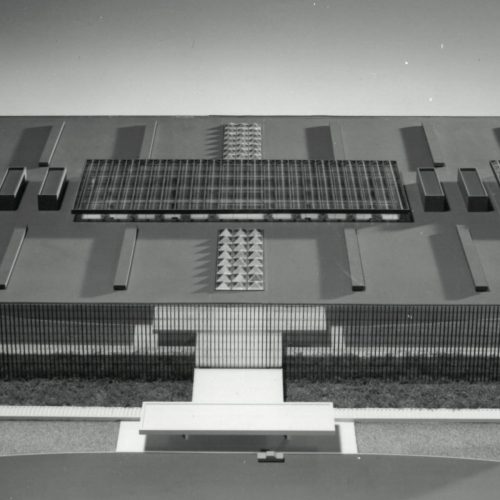Severud’s History in 1957: Bell Labs Holmdel, NJ
July 2, 2025
A New York Telephone jingle from the 1990s assured us that, “We’re all connected.” It was true then—for everyone with a landline anyway—and even more true now. Smart phones, cellular networks, and the internet allow people to remain in nearly constant contact with family, friends, and the rest of the world. Amazingly, many of the technologies that make this possible originated from one company: Bell Labs, the research arm of AT&T and Western Electric. The transistor, communications satellites, the UNIX operating system, and cellular networks were invented there and fiber optics, information theory, and human factors were developed by their scientists. And in 1957—68 years ago this summer—Severud Associates was chosen to design their facility in Holmdel, New Jersey.
For the architectural design, Bell Labs engaged Eero Saarinen, who was already known for the General Motors Technical Center in Warren, Michigan, the University of Chicago Law School, David S. Ingalls Rink at Yale University (Saarinen’s alma mater), and the IBM Thomas J. Watson Research Center in Yorktown, New York (with whom Bell Labs traded bragging rights for most Nobel Prizes and other awards). Fred N. Severud had worked on these and other Saarinen projects, going back to 1947, when he helped develop the architect’s proposal for the Gateway Arch in St. Louis, Missouri. Severud also had previous experience with Bell Labs, including design of a specialty building at their headquarters in Murray Hill, New Jersey, and analysis of a variety of telecommunications towers.
Unlike the catenary of the Gateway Arch and the curvy spine of Ingalls Rink, Saarinen’s design for the Holmdel lab is strictly prismatic, a rectangular block approximately 360 ft by 1000 ft in plan and five stories tall. It is divided into four quadrants by full-height, skylit atriums that bisect the building in both directions. Walkways at each level face the atriums on all sides, with bridges that span from quadrant to quadrant and catwalks along the exterior ends of the atriums. The effect is not unlike an indoor shopping mall—with concrete walls instead of storefronts—and had a similar intention: to provide shared spaces where scientists could run into their colleagues, ask each other questions, and share ideas.
 The exterior of the building, clad entirely in curtainwall, belies the subdivision within, except at night when the atriums’ internal lighting shines through. The building is thought to be the first in the United States to use mirrored glass, which became extremely popular in the decades that followed. Coated glass was a specialty of John Dinkeloo, who with Kevin Roche would go on to lead Saarinen’s successor firm after the noted architect’s untimely passing in 1961 (Bell Labs Holmdel is one of several projects Saarinen would not see completed). Dinkeloo developed a process that ensured the glass maintains a uniform appearance while blocking most of the sun’s heat.
The exterior of the building, clad entirely in curtainwall, belies the subdivision within, except at night when the atriums’ internal lighting shines through. The building is thought to be the first in the United States to use mirrored glass, which became extremely popular in the decades that followed. Coated glass was a specialty of John Dinkeloo, who with Kevin Roche would go on to lead Saarinen’s successor firm after the noted architect’s untimely passing in 1961 (Bell Labs Holmdel is one of several projects Saarinen would not see completed). Dinkeloo developed a process that ensured the glass maintains a uniform appearance while blocking most of the sun’s heat.
Normally, a reinforced concrete building of this overall size would need expansion joints. The atriums, however, create four smaller buildings with columns carefully oriented to avoid induced stresses and cracking. Laterally sliding joints between the structure and the curtainwall allow necessary movements under thermal variations.
After the breakup of The Phone Company in the 1980s, work at Bell Labs Holmdel diminished, the building was eventually vacated, and it faced possible demolition. Fortunately, former employees, architects, and developers rallied for its preservation, renovation, and reutilization. The building now houses a mixed-use facility combining offices, retail, dining, recreation, and a library.
Most recently, this Saarinen/Severud building stars in the television series “Severance” as the headquarters of Lumon Industries. The show is a hit—it is headed for a third season—due in part to the building’s distinctive aesthetics.
Over the years, Severud Associates has provided structural engineering services for many research laboratories, including the Andlinger Center for Energy and the Environment at Princeton University, New Jersey; the University of Pennsylvania’s Krishna P. Singh Center for Nanotechnology in Philadelphia, Pennsylvania; and the Integrated Science Commons at Vassar College in Poughkeepsie, New York.